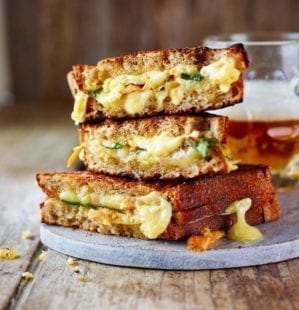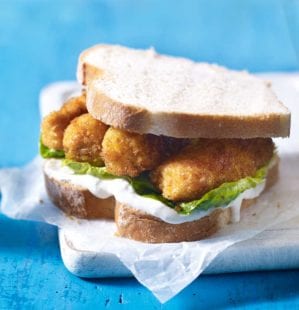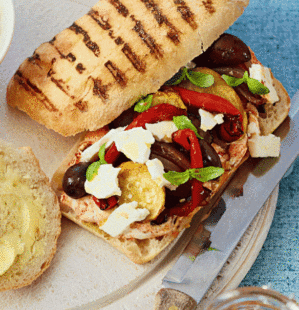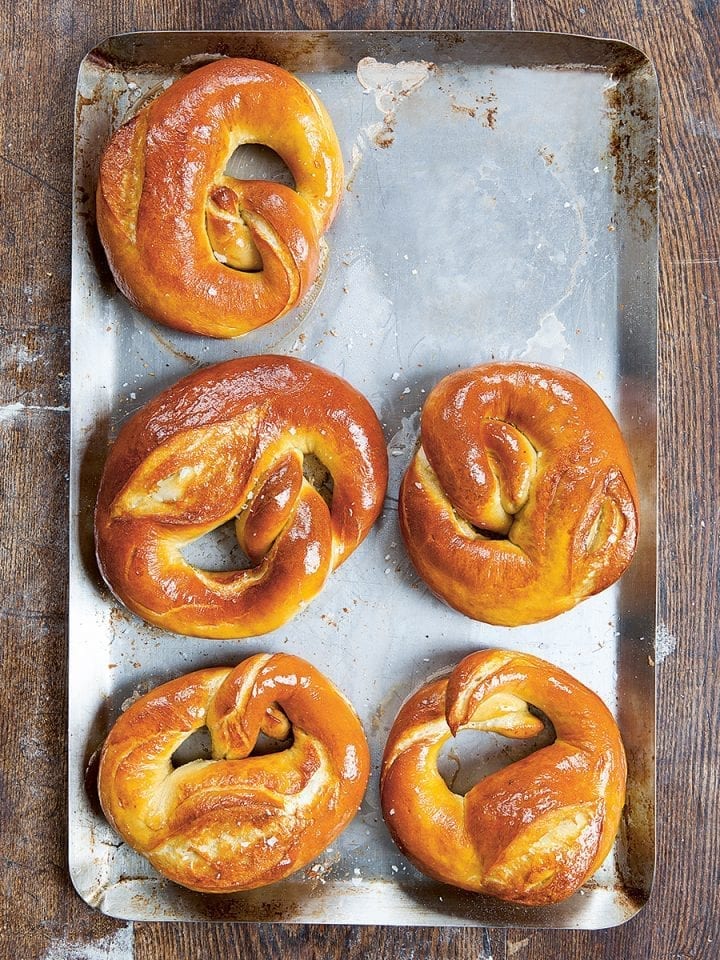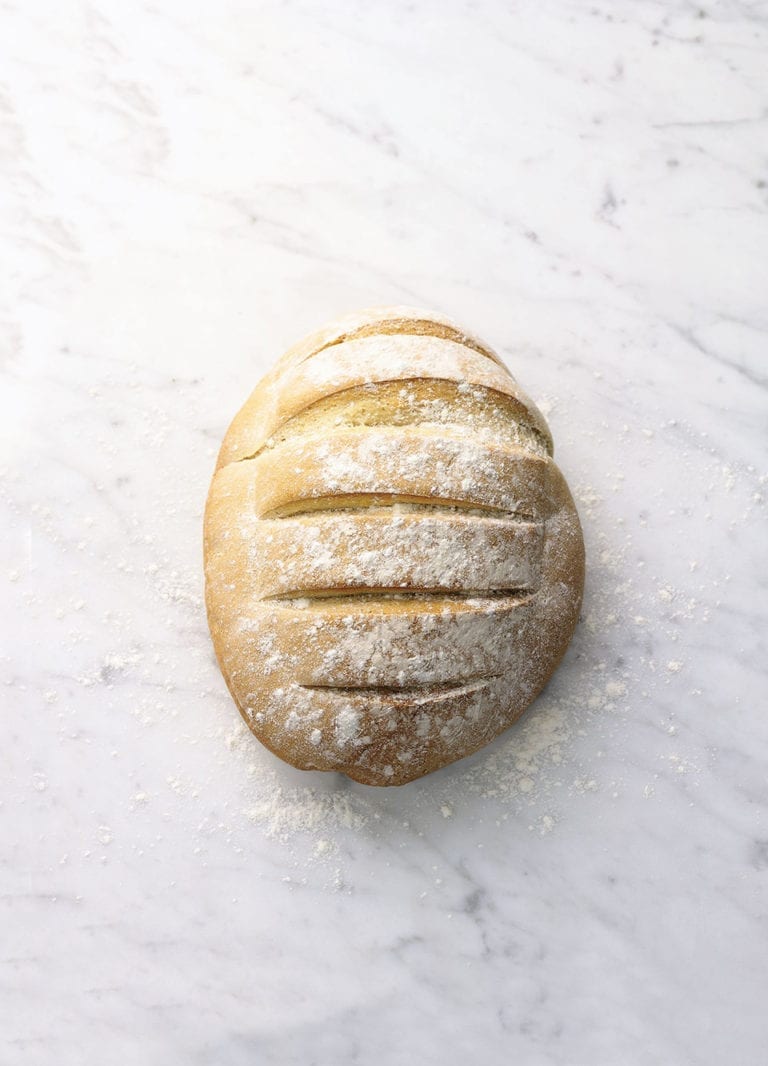How to make bagels
What sets homemade bagels apart from their ready-made counterparts is their irresistible chewy crust. Here’s how to make them from scratch.
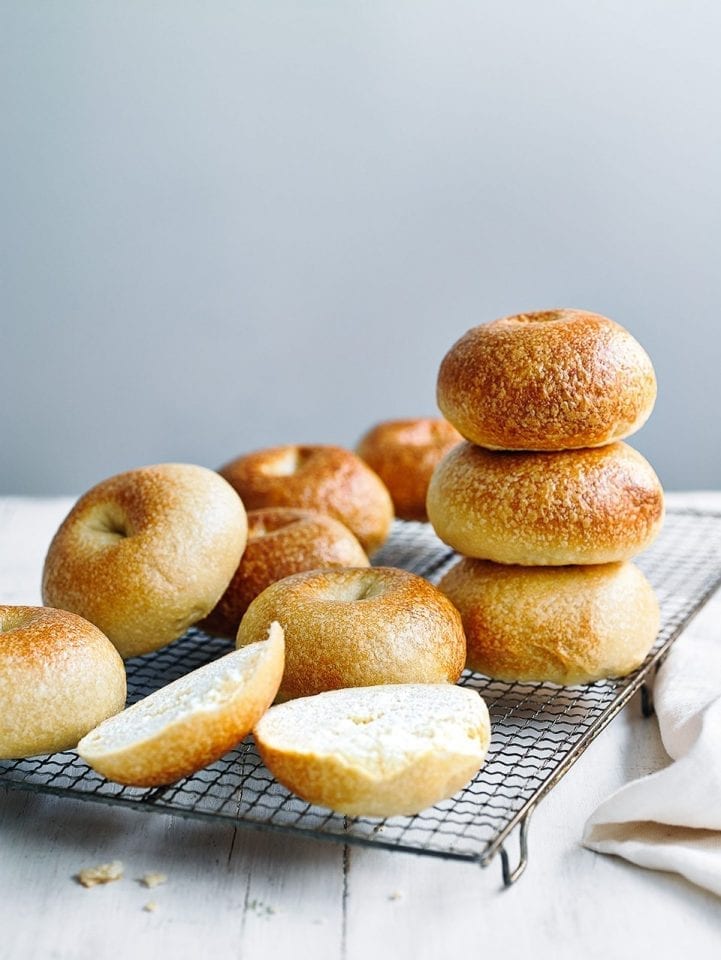
You will need:
- 1 tbsp barley malt syrup (see food team’s tips)
- 400ml lukewarm water
- 800g very strong white flour or very strong white bread flour, plus extra to dust (see Tips For Success)
- 7g fast-action dried yeast
- 2 tsp fine salt
- Vegetable oil for greasing and brushing
- 1 tbsp bicarbonate of soda
Makes 12 bagels
Hands-on time 45 min, oven time 16 min, plus rising and 12-24 hours proving
1. Begin a day before you want to serve the bagels (see Tips For Success below). In a small bowl, mix the barley malt syrup and water.
2. Sift the flour, yeast and salt into the bowl of a stand mixer (or large mixing bowl if you don’t have a stand mixer). Make a well in the centre and stir in the liquid. Mix with a wooden spoon until it forms a rough dough, then add the dough hook to the mixer and work on a medium speed for 10 minutes (see food team’s tips below) until the dough is smooth and stretchy. If making it by hand, tip the rough dough onto a floured work surface and knead for 25 minutes.
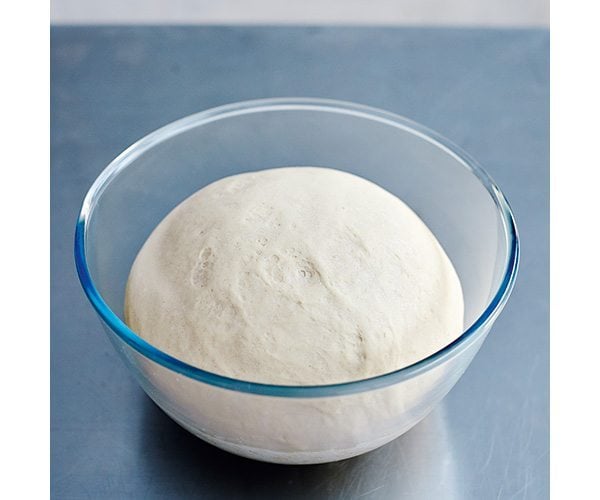
3. Put the dough in a large, oiled bowl, cover with a tea towel and leave to rise in a warm place for 1 hour or until doubled in size.
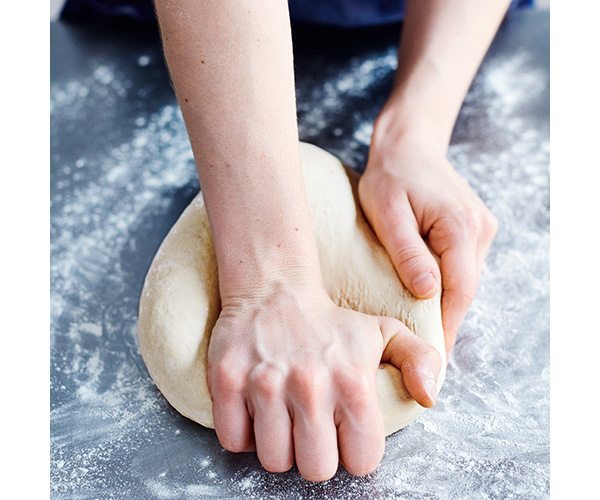
4. Line 2 baking sheets with lightly oiled non-stick baking paper and divide the dough into 12 pieces, about 100g each.
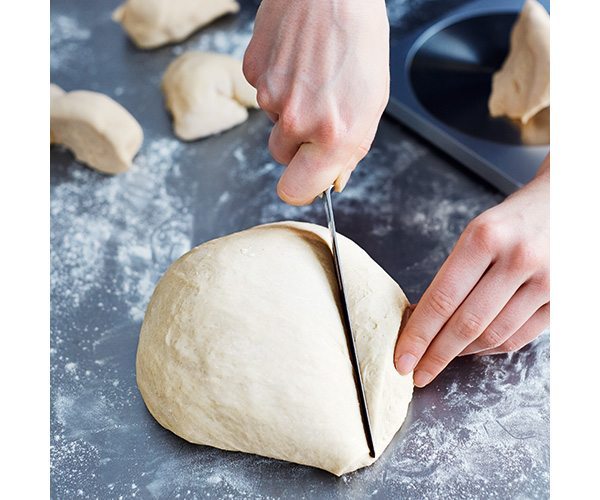
5. To shape the bagels, take a piece of dough, then bring the edges into the centre of the dough underneath so the top forms a smooth dome.
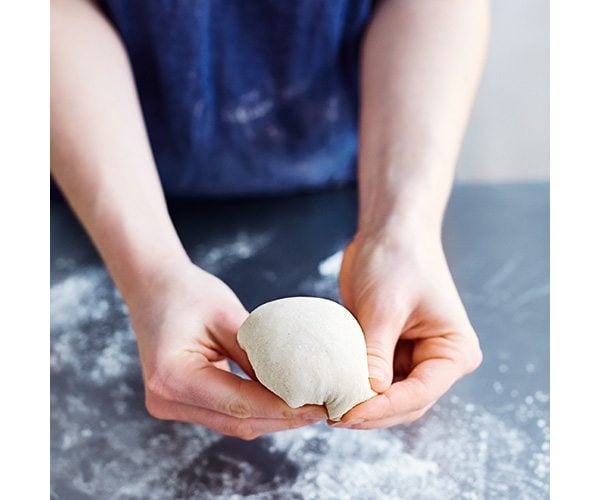
6. Put the dough, dome-side up, on a floured work surface and cup your hand loosely over it. Make small circles with your hand, gently shaping the dough into a round, flattish ball.
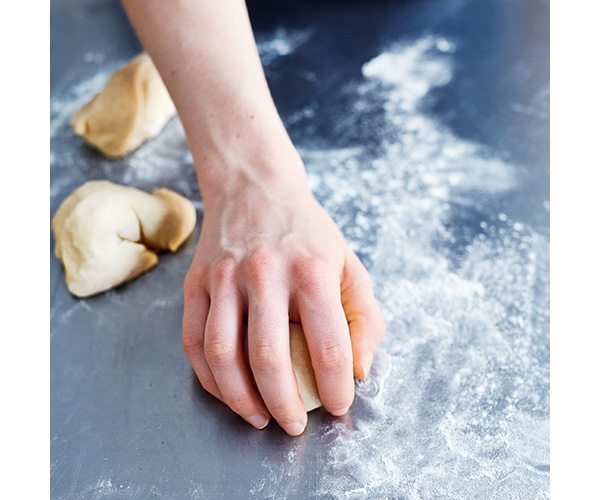
7. Using a finger (or the handle of a wooden spoon), poke a hole into the centre of the dough, then gently stretch it out until the hole is about 4cm in diameter.
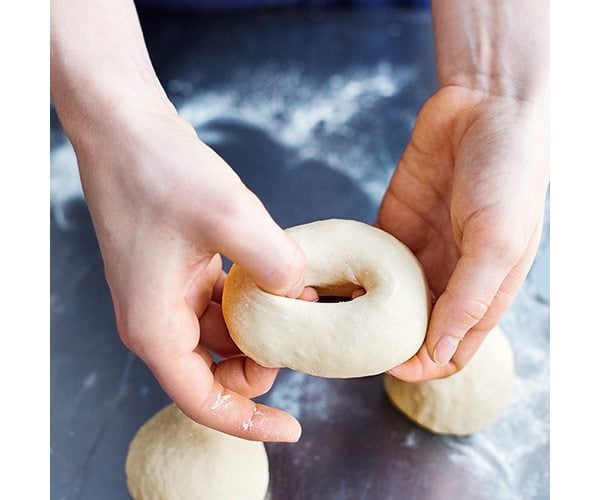
8. Put the bagel onto a prepared baking sheet, then repeat with the rest of the dough. Lightly brush the bagels with oil, then loosely cover with cling film. Leave to prove in the fridge for 12-24 hours.
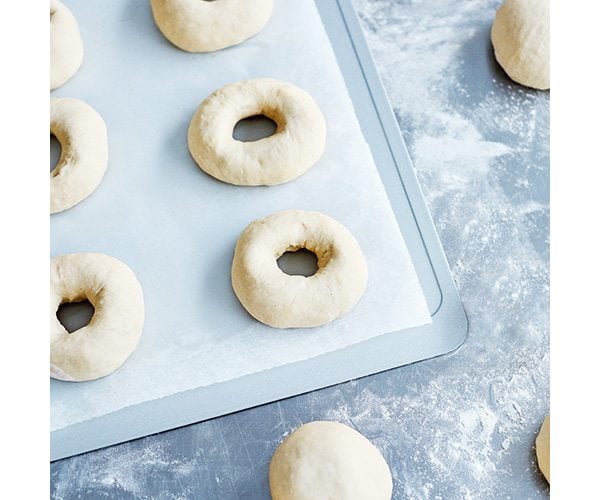
9. The next day, remove the trays from the fridge half an hour before cooking to let the bagels come to room temperature. Heat the oven to 240°C/220°C fan/gas9. Bring a very large, deep sauté pan or saucepan of water to the boil, turn down the heat so the water is just simmering, then stir in the bicarbonate of soda.
10. Use a slotted spoon to gently lower the bagels, in batches, into the water. Cook for 1 minute on each side, then lift from the water and put, rounderside up, back onto the baking sheets (now’s the time to sprinkle with seeds if you want to – see food team’s tips below).
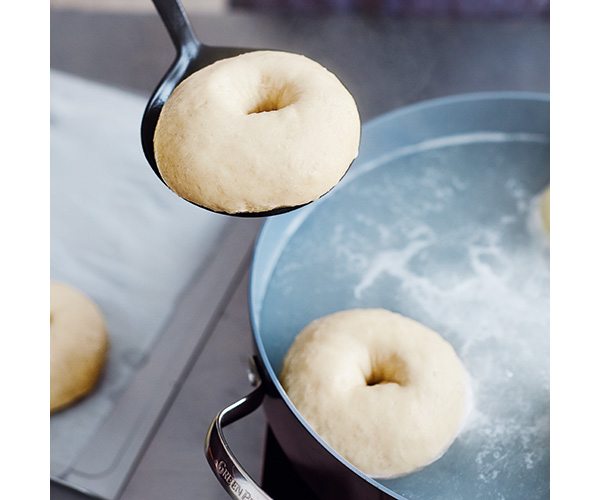
11. Bake for 8 minutes, then turn the oven to 210°C/190°C fan/gas 6½ and bake for 8 minutes until golden. Remove the trays from the oven then, using a tea towel, put the bagels on wire racks to cool. They’re best eaten within a few hours (see Make Ahead below).
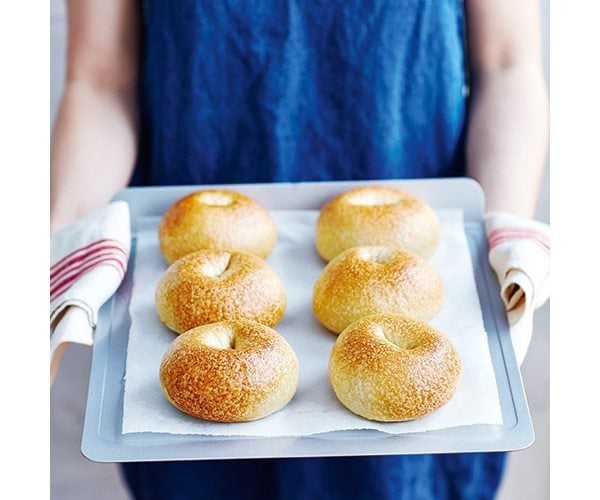
FOOD TEAM’S TIPS
You can buy barley malt syrup (also known as barley malt extract) in health food shops. If you can’t find it, use the same amount of honey instead. Bagel dough is stiff. If using a stand mixer, keep an eye on it as it may struggle. If it starts to overheat while kneading, carry on by hand instead. To add seeds, sprinkle them over the bagels immediately after boiling. Sesame and poppy seeds work well.
MAKE AHEAD
Cooked bagels can be frozen in a freezer bag for up to 3 months. You can split them, put baking paper in between the halves, then freeze. Simply toast from frozen for a quick breakfast.
TIPS FOR SUCCESS
- The longer the proving time in the fridge (step 3), the better the flavour the bagels will have. You can cook them after 12 hours, but it’s worth waiting 24 hours if you can.
- There are two methods for shaping bagels. One is to push a hole in the dough, as in this recipe. The other is to roll the dough into a sausage, then join the ends together by pressing. However, this knocks too much air out of the dough and the pressed areas have a less uniform shape.
- Adding bicarbonate of soda to the water before boiling the bagels (step 4) helps to give them a shiny, bubbly, chewy crust.
- A bagel’s chewiness is partly due to boiling and partly due to the high protein/ gluten content of very strong flour (14-16% protein). You can use regular strong bread flour (12-13% protein), but it won’t be quite as chewy. Plain flour is about 10% protein.
NUTRITIONAL INFORMATION (per bagel)
253kcals, 1.1g fat (0.2g saturated), 8.5g protein, 51.2g carbs (1.2g sugars), 1.1g salt, 2.2g fibre
Subscribe to our magazine
Food stories, skills and tested recipes, straight to your door... Enjoy 5 issues for just £5 with our special introductory offer.
Subscribe
Unleash your inner chef
Looking for inspiration? Receive the latest recipes with our newsletter
